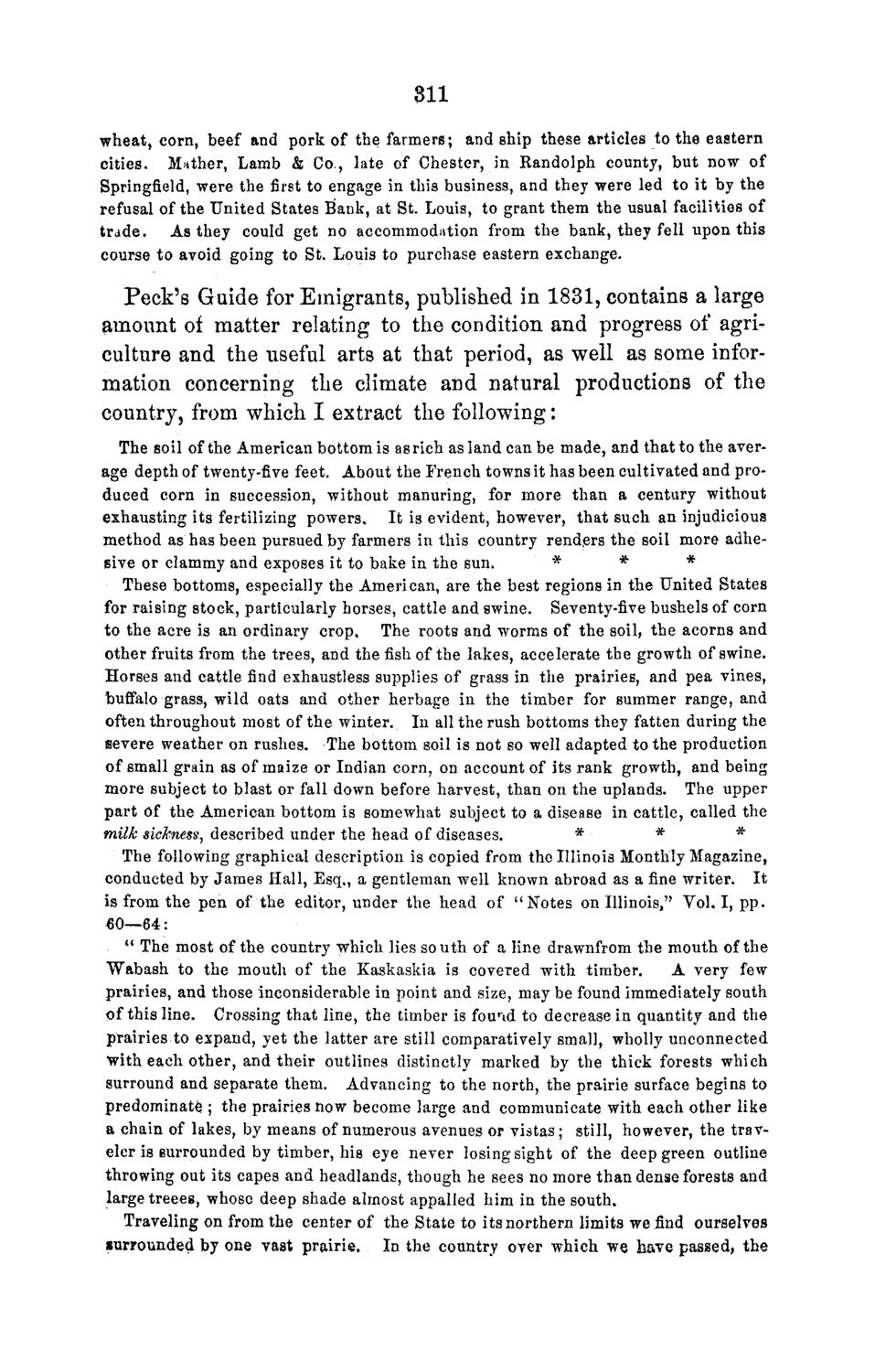| |
| |
Caption: Board of Trustees Minutes - 1868
This is a reduced-resolution page image for fast online browsing.

EXTRACTED TEXT FROM PAGE:
311 wheat, corn, beef and pork of the farmers; and ship these articles to the eastern cities. Mather, Lamb & Co,, late of Chester, in Randolph county, but now of Springfield, were the first to engage in this business, and they were led to it by the refusal of the United States Bank, at St. Louis, to grant them the usual facilities of trade. As they could get no accommodation from the bank, they fell upon this course to avoid going to St. Louis to purchase eastern exchange. Peck's Guide for Emigrants, published in 1831, contains a large amount of matter relating to the condition and progress of agriculture and the useful arts at that period, as well as some information concerning the climate and natural productions of the country, from which I extract the following: The soil of the American bottom is as rich as land can be made, and that to the average depth of twenty-five feet. About the French towns it has been cultivated and produced corn in succession, without manuring, for more than a century without exhausting its fertilizing powers. It is evident, however, that such an injudicious method as has been pursued by farmers in this country renders the soil more adhesive or clammy and exposes it to bake in the sun. * * * These bottoms, especially the American, are the best regions in the United States for raising stock, particularly horses, cattle and swine. Seventy-five bushels of corn to the acre is an ordinary crop, The roots and worms of the soil, the acorns and other fruits from the trees, and the fish of the lakes, accelerate the growth of swine. Horses and cattle find exhaustless supplies of grass in the prairies, and pea vines, buffalo grass, wild oats and other herbage in the timber for summer range, and often throughout most of the winter. In all the rush bottoms they fatten during the severe weather on rushes. The bottom soil is not so well adapted to the production of small grain as of maize or Indian corn, on account of its rank growth, and being more subject to blast or fall down before harvest, than on the uplands. The upper part of the American bottom is somewhat subject to a disease in cattle, called the milk sickness, described under the head of diseases. * • * * The following graphical description is copied from the Illinois Monthly Magazine, conducted by James Hall, Esq., a gentleman well known abroad as a fine writer. It is from the pen of the editor, under the head of "Notes on Illinois," Vol. I, pp. €0—-64: " The most of the country which lies south of a line drawnfrom the mouth of the Wabash to the mouth of the Kaskaskia is covered with timber. A very few prairies, and those inconsiderable in point and size, may be found immediately south of this line. Crossing that line, the timber is found to decrease in quantity and the prairies to expand, yet the latter are still comparatively small, wholly unconnected "with each other, and their outlines distinctly marked by the thick forests which surround and separate them. Advancing to the north, the prairie surface begins to predominate ; the prairies now become large and communicate with each other like a chain of lakes, by means of numerous avenues or vistas; still, however, the traveler is surrounded by timber, his eye never losing sight of the deep green outline throwing out its capes and headlands, though he sees no more than dense forests and large treees, whoso deep shade almost appalled him in the south. Traveling on from the center of the State to its northern limits we find ourselves surrounded by one vast prairie. In the country over which we have passed, the
| |